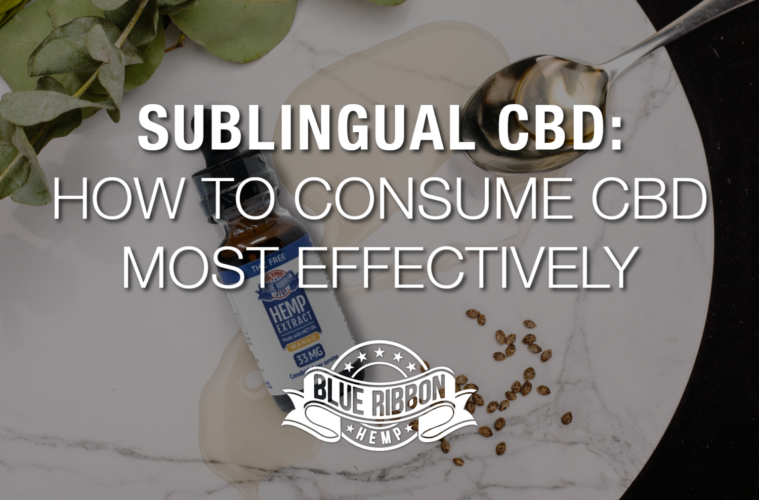This article was originally published on Blue Ribbon Hemp. To view the original article, click here.
Consuming CBD has been made easy these days. From flavored oils and tinctures to edibles and pre-made drinks, there are endless options for getting your daily dose of CBD. But did you know not all consumption methods are equal? There can be a variety of circumstances that determine how quickly CBD activates in the body after consumption, and one of the biggest factors is not only the CBD product you choose but also the way you consume it. One easy hack to up the ante of your CBD’s beneficial properties is consume it sublingually – and that doesn’t just mean by mouth, let us explain.
What is the Sublingual Gland
You may be thinking back to the last anatomy class you took wondering what in the world a sublingual gland is. There are a pair of these glands located under your tongue that only produce minimal amount of saliva in your mouth, and beneath them is even more rich tissue loaded with blood vessels. This is where the interest in sublingual CBD consumption comes into play, with the precise and rapid uptake of active ingredients into the bloodstream.
This rapid absorption will dramatically increase how fast the effects of CBD can be felt. Because of the thin lining and soft tissue below the sublingual glands, CBD is able to interact with the endocannabinoid system and impact the CB1 and CB2 receptors more effectively. By taking your CBD orally and strategically placing it within proximity to the sublingual glands under the tongue, you may be able to increase the therapeutic properties present in CBD.
What Is CBD?
CBD, also known as cannabidiol, is one of many naturally occurring compounds in cannabis sativa and hemp plants. CBD is derived naturally and extracted from the plants through a variety of methods, commonly through C02 extraction. From there CBD, among other rare cannabinoids can be used in conjunction or isolated to make CBD products like oils and tinctures, most commonly used for sublingual consumption.
Cannabidiol has been used for centuries in alternative medicine practices and has recently begun to enter the mainstream world of health and wellness. CBD interacts directly with the human body’s endocannabinoid system, also known as the ECS. The ECS is responsible for transmitting messages to the brain through receptors. CBD can impact the transmissions created between the CB1 and CB2 receptors, helping to block signals of pain, stress, anxiety, restlessness, inflammation and more. Consuming CBD sublingually and really targeting the sublingual glands can improve the absorption and interaction of CBD with human.
How To Consume CBD Sublingually and Most Effectively
The sublingual method of consumption may be safer than smoking or vaporizing CBD, especially for seniors who may have underlying health conditions. Although edibles and CBD gummies are also popular they are less effective for rapid effectiveness as your digestive system also plays a role in absorption. Sublingual CBD usage means turning to a quality CBD oil or tincture and placing it under the tongue instead of simply swallowing your CBD.
To use CBD sublingual in the most effective way:
- Take a dropper full of Blue Ribbon Hemp’s Broad Spectrum CBD Tincture and place it directly under your tongue
- Allow the oil to sit and absorb under your tongue for 30 seconds to a minute (longer if you can, it is flavored after all!)
- Swallow the rest of the oil
- Repeat as necessary
Pro Tip: If you have an aversion to the taste or texture of CBD oil, you are not alone. There is another option for effective sublingual consumption. Try Blue Ribbon Hemp’s Menthol Flavored Oral Strips. Easily place this tasty little breath saver under your tongue and enjoy!
Advertising disclosure: We may receive compensation for some of the links in our stories. Thank you for supporting LA Weekly and our advertisers.


